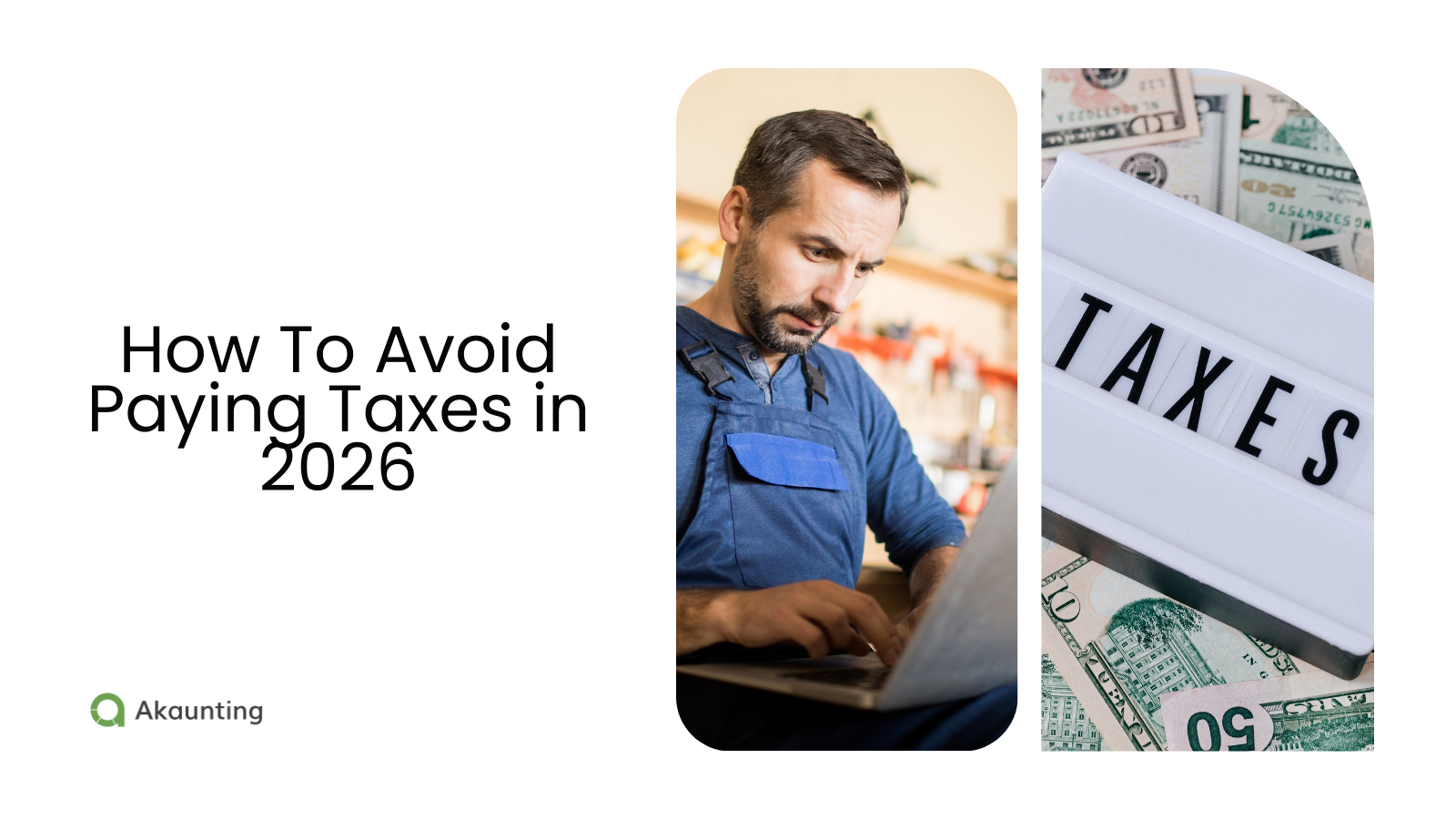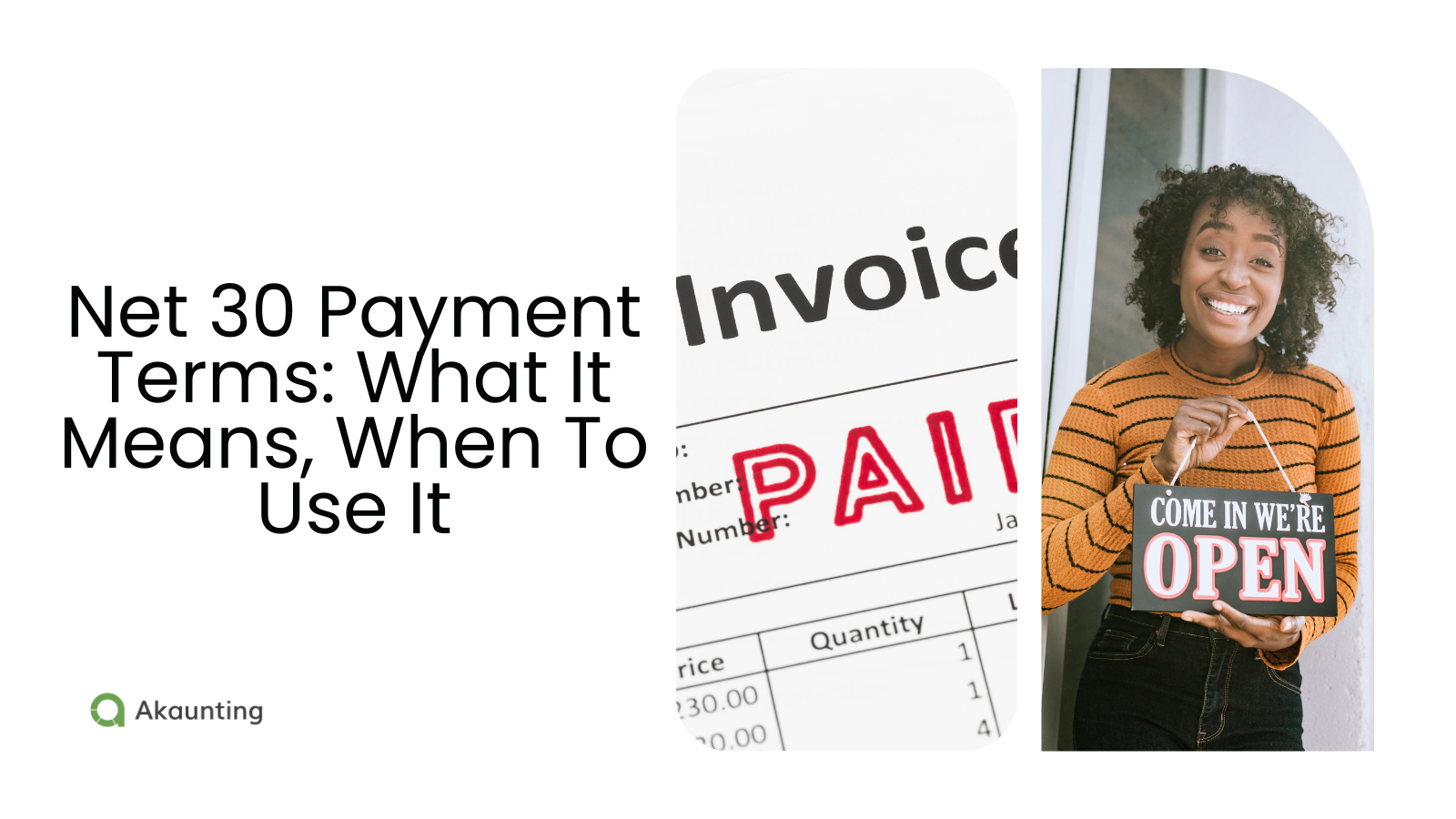How To Avoid Paying Taxes in 2026
Reading Time: 7 minutesThis blog post has been updated with the latest 2026 tax rates
“How to avoid paying taxes” is Tax Avoidance—finding a legal way to reduce your taxes. It is often misinterpreted as Tax Evasion—not paying taxes at all.
Tax evasion conceals financial information from tax authorities, which can result in significant fines, penalties, and damage to a business’s reputation and growth.
Instead of avoiding paying taxes, you should focus on finding legal and ethical ways to reduce them.
Here are…
Simple ways to avoid paying taxes legally:
Click on the links to navigate to specific sections.
- 401k/Contribution to IRA
- Open a Health Savings Account
- Itemized Deductions
- Claim Tax Credits
- Charitable donations
- Flexible Spending Accounts (FSA)
- Invest in Municipal Bonds
- School Enrollment
- Self-employed/Independent contractor deductions
- Seek professional advice
401k/Contribution To IRA
Contributing to an Individual Retirement Account (IRA) can reduce your annual taxable income.
While your contributions can’t exceed the total income earned or maximum yearly contribution in a taxable year, it is 100% deductible.
The retirement plans must satisfy IRS requirements and include, but are not limited to:
- Roth IRA
- Simple IRA
- Solo 401(k)
- Keogh plan
You are probably asking…
How much can I contribute to my 401k?
Each year, usually in October or November, the Internal Revenue Service (IRS) reviews the contribution limits for 401(k) plans, individual retirement accounts (IRAs), and other retirement savings vehicles.
- Employees can contribute up to $24,500 to their 401(k) plan in 2026. Those aged 50 or over may make a catch‑up contribution of $8,000. This brings the total individual employee deferral limit for an age‑50+ participant to $32,500 for the year.
- The general limit on total employer/employee contributions to a defined contribution plan (the Section 415(c) limit) for 2026 is $72,000. When you add the standard age‑50+ catch‑up contribution of $8,000, the combined maximum for catch‑up contributions becomes $80,000.
Open A Health Savings Account
Freelancers and self‑employed individuals covered by a qualified High‑Deductible Health Plan (HDHP) remain eligible to open and contribute to a Health Savings Account (HSA).
For 2026, the annual HSA contribution limits are $4,400 for self‑only coverage and $8,750 for family coverage; individuals aged 55 or older may contribute an additional $1,000 catch‑up amount.
Contributions reduce taxable income when made by the individual (or are pre‑tax when made through payroll), qualified medical withdrawals are tax‑free, and HSA balances roll over year to year indefinitely.
Itemized Deductions
Most people commonly use the standard deduction because of its simplicity. However, itemized deductions allow you to make a detailed list of all payments or contributions that are tax deductible.
Payments for mortgage interest, property taxes, medical expenses, and local and state taxes fall under tax deductibles.
Itemizing these payments qualifies you for tax deductions subtracted from your adjusted gross income, reducing your taxable income.
Check out the Tax deduction cheatsheet for small businesses.
Claim Tax Credits
Tax credits reduce the tax you owe to the IRS or other tax authorities and can result in a refund when the credit exceeds your tax liability.
For the 2026 tax year, the maximum Earned Income Tax Credit (EITC) amount is $8,231 for qualifying taxpayers with three or more qualifying children. This is an increase from $8,046 for tax year 2025.
The maximum amount available for qualifying taxpayers is as follows:
– Those with two eligible children, the amount remains $7,316.
– Those with one qualifying child, the amount remains $4,427.
– For those with no qualifying children, the amount remains $664.
2026 Earned Income Tax Credit (EITC)
| Number of children | Maximum earned income tax credit | Max income: Single or head of household | Max income: Married or filing jointly |
| 0 | $664 | $19,540 | $26,820 |
| 1 | $4,427 | $51,593 | $58,863 |
| 2 | $7,316 | $58,629 | $65,899 |
| 3 or more | $8,231 | $62,974 | $70,224 |
The Earned Income Tax Credit (EITC) is calculated using a formula considering income and family size.
The credit’s income limits range from $19,540 for single taxpayers with no children to $70,224 for married couples filing jointly.
The IRS website breaks down all the credits you may be eligible for as a business or an individual.
Charitable Donations
For the 2026 tax year, charitable contributions to qualified organizations can generally be claimed as “Gifts to Charity” on Schedule A (Form 1040) if you itemize your deductions.
Cash gifts—including checks, credit/debit cards, electronic transfers, and payroll deductions—and donations of property, such as clothing or household goods in good used condition, may be deductible when made to IRS-qualified charities.
Beginning in 2026, itemizers can deduct charitable contributions only if their total contributions exceed 0.5% of their adjusted gross income (AGI).
Non-itemizers will be able to claim a separate above-the-line deduction of up to $1,000 for cash gifts ($2,000 for married couples filing jointly) to qualifying public charities, excluding donor-advised funds and similar entities.
To claim any charitable deduction, you must maintain proper documentation: for cash gifts of any amount, retain a bank record or written communication from the charity that includes its name, the date, and the amount.
For any single contribution of $250 or more (including unreimbursed out-of-pocket volunteering expenses), you need a contemporaneous written acknowledgment from the charity.
You can also deduct unreimbursed expenses incurred while volunteering, such as mileage or supplies, if they are properly documented. However, you cannot deduct the value of your time or services.
Flexible Spending Account (FSA)
Flexible Spending Account (FSA) is an employer-established benefit that lets employees set aside pre-tax salary to pay for certain eligible expenses, such as health-care costs or dependent care. Contributions are usually made through salary reduction (payroll deductions) and reduce the employee’s taxable income.
There are two common types of FSAs:
- 1. Medical (Health) FSA: A health FSA allows employees to contribute pre-tax dollars to pay for qualified medical expenses, such as:
-
- – Insurance copays and deductibles
- – Prescription drugs
- – Eligible over-the-counter medications and medical supplies
- – Certain other IRS-approved health expenses
- 2. Dependent Care FSA (DCFSA): A dependent care FSA allows employees to contribute pre-tax dollars to pay for qualified dependent care expenses, such as:
- – Child care (e.g., daycare, preschool, before/after-school care)
- – Care for a disabled spouse or adult dependent who can’t care for themselves and lives with the employee
In both cases, there are annual contribution limits set by the IRS, and FSAs are generally subject to a “use-it-or-lose-it” rule. Any amount not used by the end of the plan year is usually forfeited back to the plan.
Invest in Municipal Bonds
Municipal bonds (munis) are debt securities issued by state and local governments or their agencies to fund public projects like roads, schools, and hospitals. These bonds are generally considered to be lower risk than many corporate bonds because they are backed by government issuers. However, they do carry default and credit risks, which can vary based on the issuer and the specific type of bond.
One of the key benefits of most MUNIS is that the interest income is exempt from U.S. federal income tax. Additionally, it may be exempt from state and local income taxes if you reside in the state where the bond was issued. It’s important to note that this tax exemption doesn’t apply to all aspects:
- – Capital gains, which occur if you sell the bond for more than you paid, are subject to taxation.
- – Some municipal bonds are taxable, meaning their interest is subject to federal tax.
- – High-income investors may also face additional regulations, such as exposure to the Alternative Minimum Tax (AMT) on certain private-activity bonds.
When a municipal bond reaches maturity, you typically receive your principal amount back; however, the tax advantages apply only to the interest earned, not to the entire investment.
School Enrollment
The U.S. government offers two main education tax credits for qualified tuition and related expenses at eligible educational institutions (including many accredited online programs and community colleges).
American Opportunity Tax Credit (AOTC):
You may claim up to $2,500 per eligible student per year for the first four years of post-secondary education. The credit equals 100% of the first $2,000 of qualified expenses and 25% of the next $2,000.
It can be used for tuition, required fees, and course materials and is partially refundable (up to $1,000 back even if you owe no tax).
Income limits apply (Modified Adjusted Gross Income phase-out between $80,000–$90,000 single / $160,000–$180,000 MFJ), and starting in 2026, a valid Social Security number is required to claim the credit.
Lifetime Learning Credit (LLC):
You may claim up to $2,000 per tax return (20% of up to $10,000 of qualified expenses) each year for undergraduate, graduate, or job-skills courses, with no limit on the number of years you can claim it.
It can be used for tuition and required fees (and, in some cases, course materials), but it is nonrefundable (it can reduce tax to zero but won’t generate a refund by itself).
The income limits and MAGI phase-out range are the same as for the AOTC, and from 2026 you also need a valid SSN.
You generally can’t claim both credits for the same student on the same expenses in the same year, and you must have Form 1098-T from the school and meet all other IRS eligibility rules.
Check out: The 2026 Income Tax Brackets for Individuals and Married Couples.
Self-Employed/Independent Contractor Deductions
If you are self-employed, including as an independent contractor or freelancer, you can claim tax deductions for ordinary and necessary business expenses. Additionally, you may deduct half of your self-employment (SE) tax when calculating your adjusted gross income on Form 1040.
For the 2026 tax year, the self-employment tax rate remains at 15.3%. This consists of 12.4% for Social Security (which covers old-age, survivors, and disability insurance) and 2.9% for Medicare (hospital insurance).
For the 2026 tax year, the Social Security portion of the self-employment (SE) tax applies only to the first $184,500 of your combined wages, tips, and net earnings from self-employment. This taxable wage base is up from $176,100 in 2025 and $168,600 in 2024, based on the Social Security Administration’s annual adjustments. Any earnings above this cap are not subject to the 12.4% Social Security portion of the SE tax.
However, you still pay the 2.9% Medicare portion of the SE tax on your net self-employment earnings, with no cap. In addition, high-income taxpayers may owe an extra 0.9% Additional Medicare Tax on wages and self-employment income above the fixed thresholds of $200,000 (single/HOH/most others), $250,000 (married filing jointly), and $125,000 (married filing separately).
To compute your SE tax, use Schedule SE (Form 1040). When calculating your adjusted gross income on Form 1040, you can deduct half of your self-employment tax as an above-the-line deduction. This reduces your taxable income without affecting the total amount of SE tax owed.
Seek Professional Advice
Working with a financial advisor can help your business identify tax-saving strategies that comply with all relevant laws and regulations.
A professional can help a business understand its options and make informed decisions about how to avoid paying taxes.
Final Thoughts!
Overall, your business can use many strategies to minimize the cost of taxes and improve profitability.
The goal should not be to evade taxes but to reduce the amount you pay to the government.
It is crucial to comply with all applicable tax laws and regulations, and to seek professional advice to minimize the tax burden and enhance financial performance.




